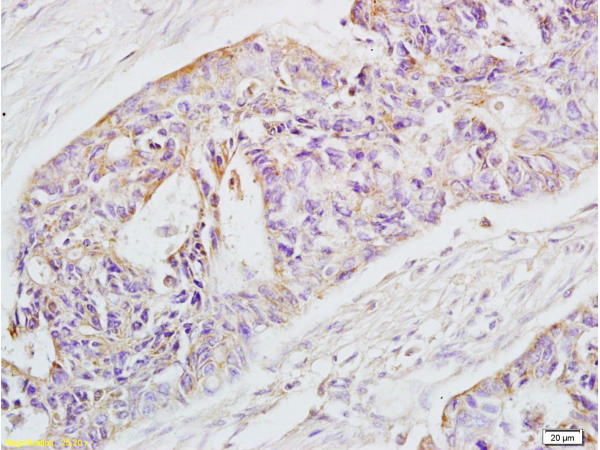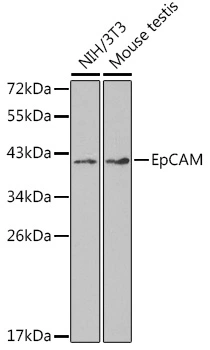EpCAM antibody [ESA 214] (FITC)
GTX30708
ApplicationsFlow Cytometry, ImmunoFluorescence, ImmunoCytoChemistry, ImmunoHistoChemistry
Product group Antibodies
TargetEPCAM
Overview
- SupplierGeneTex
- Product NameEpCAM antibody [ESA 214] (FITC)
- Delivery Days Customer9
- Application Supplier NoteIHC, ICC (frozen or formalin-fixed paraffin-embedded (FFPE) tissue sections, cell smears. For IHC dilute conc. antibodies 1:50-1:100, use streptavidin~biotin system or polymer system, incubate 30 minutes at room temperature. IF, FITC~conjugated antibodies 10-20 microg/ml (1:10-1:20), incubate for 2 hours in the dark at RT or it can also be incubated overnight at 4C. FITC~conjugated antibodies, 0.2-1.0 microg/0.1 ml (1:200-1:1,000)
- ApplicationsFlow Cytometry, ImmunoFluorescence, ImmunoCytoChemistry, ImmunoHistoChemistry
- CertificationResearch Use Only
- ClonalityMonoclonal
- Clone IDESA 214
- Concentration0.20 mg/ml
- ConjugateFITC
- Gene ID4072
- Target nameEPCAM
- Target descriptionepithelial cell adhesion molecule
- Target synonymsBer-Ep4, BerEp4, DIAR5, EGP-2, EGP314, EGP40, ESA, HNPCC8, KS1/4, KSA, LYNCH8, M4S1, MIC18, MK-1, MOC-31, TACSTD1, TROP1, epithelial cell adhesion molecule, adenocarcinoma-associated antigen, cell surface glycoprotein Trop-1, epithelial glycoprotein 314, human epithelial glycoprotein-2, major gastrointestinal tumor-associated protein GA733-2, membrane component, chromosome 4, surface marker (35kD glycoprotein), trophoblast cell surface antigen 1, tumor-associated calcium signal transducer 1
- HostMouse
- IsotypeIgG1
- Protein IDP16422
- Protein NameEpithelial cell adhesion molecule
- Scientific DescriptionThis gene encodes a carcinoma-associated antigen and is a member of a family that includes at least two type I membrane proteins. This antigen is expressed on most normal epithelial cells and gastrointestinal carcinomas and functions as a homotypic calcium-independent cell adhesion molecule. The antigen is being used as a target for immunotherapy treatment of human carcinomas. Mutations in this gene result in congenital tufting enteropathy. [provided by RefSeq, Dec 2008]
- Storage Instruction2°C to 8°C
- UNSPSC12352203
References
- Integration of Patient-Derived Organoids and Organ-on-Chip Systems: Investigating Colorectal Cancer Invasion within the Mechanical and GABAergic Tumor Microenvironment.Read more
- A combinatorial panel for flow cytometry-based isolation of enteric nervous system cells from human intestine.Read more
- Alternative splicing downstream of EMT enhances phenotypic plasticity and malignant behavior in colon cancer.Read more
- Phenotypic plasticity underlies local invasion and distant metastasis in colon cancer. Sacchetti A et al., 2021 May 26, ElifeRead more



![IHC-P analysis of human breast carcinoma tissue using GTX28667 EpCAM antibody [VU-1D9].](https://www.genetex.com/upload/website/prouct_img/normal/GTX28667/GTX28667_1328_IHC-P_w_23060722_693.webp)
